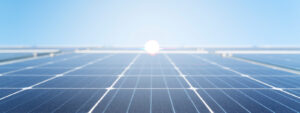To deal with the crisis of global warming, world leaders met in Glasgow earlier this month to outline climate commitments at the COP26 summit. This is giving a boost to carbon neutrality movements spreading throughout the world.
In order to achieve the goal of net carbon emission neutrality, changes are afoot in the building industry, and Samsung C&T Engineering & Construction Group is striving to show leadership in eco-friendly construction.
An eco-friendly wind is blowing
According to statistics from the International Energy Agency (IEA), buildings and the construction industry account for 40% of the world’s energy demand. The buildings and the construction industry emitted 9.95 billion tons of carbon in 2019, accounting for 38% of that year’s carbon emissions. The World Green Building Council argues that significant carbon reduction in the building and construction sector is needed to limit the global temperature increase to within 1.5 degrees Celsius. To this end, the Council has set a carbon-neutral goal for the sector by 2050.
Carbon is emitted not only when using buildings, but also when building them and in transporting construction materials and maintaining, renovating, and demolishing buildings. In order to minimize carbon generated in this process, eco-friendly materials and techniques are also attracting attention in the construction field.
Sound environmental management
Samsung C&T E&C Group practices environmental management throughout the entire construction process from design to contract, construction, and responding to stakeholders. Before commencing construction work, the E&C Group preemptively identifies and manages environmental risks with consideration for the local conditions and characteristics of each project throughout the entire construction process.
Processes have been improved to have less of an impact on the environment. For example, in 2009, the E&C Group introduced a designated waste disposal company registration system to minimize the environmental and social impacts caused by construction waste.
On-site conditions are not the same all year around; temperature and precipitation also play a role. This is why each season Samsung C&T E&C Group performs environment-focused inspections to preemptively manage seasonal environmental risk factors.

Carbon mitigation activities
A simple yet effective way to mitigate carbon emissions is to improve energy efficiency at business sites. The group is now running solar energy pilot projects on construction sites to increase the use of renewable energy.
Furthermore, the E&C Group has also been continuously implementing greenhouse gas emission and fine dust reduction activities through the Korean government’s Eco-Drive campaign, which calls for better operation practices for construction vehicles, machines, and equipment, as well as overall improved fuel efficiency. The group also plans to gradually increase the use of electric vehicles on construction sites.
Seeing the need to further expand eco-friendly businesses, Samsung C&T E&C Group in 2020 added the renewable energy criteria to the ISO14001 standard, which defines criteria for an environmental management system.
In addition, the E&C Group strives to improve the energy efficiency of its buildings, by for example developing external panels with excellent insulation capacities and new technologies that improve the efficiency of air-conditioning facilities based on data in order to improve the operational efficiency of industrial plants.
The group is also leading in the usage of eco-friendly materials and improving resource efficiency. To this end, it optimizes building structures, develops new materials, and minimizes the amount of raw materials such as concrete and steel bars used on site. For its apartment brand Raemian, the group developed a new dry construction technique, which minimizes the amount of concrete on site.
In 2020, the E&C Group achieved zero direct landfill waste, in comparison to 800 tons of landfill waste in 2019, by improving its waste treatment process during construction. In the case of waste wood and plasterboards, 95% was recycled in 2020 as the raw ingredients for products and fuel.
The group plans to establish standards and procedures to use construction site wastewater as spray water (to prevent dust from flying around) after processing in internal and external water treatment facilities. In addition, the group plans to develop standard facilities that can be installed in construction sites to store rainwater to boost the water recycling rate even more.
The fruits of labors
Samsung C&T E&C Group’s efforts in the field of eco-friendly construction are not only recent. In 2009, the group unveiled Green Tomorrow, a zero-energy building that does not use fossil energy and does not generate carbon emissions; also, Samsung C&T’s headquarters building in 2012 was Leadership in Energy and Environmental Design (LEED) Gold Certified.
With growing interest and efforts in environmental care and sustainability, Samsung C&T in 2020 declared its intention to exit coal, and earlier this year, the company was named to the Hall of Fame at the Carbon Disclosure Project (CDP) Korea Awards, a carbon information disclosure program to cope with climate change. It was the company’s fifth consecutive year to receive that honor.
Accordingly, Samsung C&T E&C Group will continue to make efforts in the field of eco-friendly construction.







